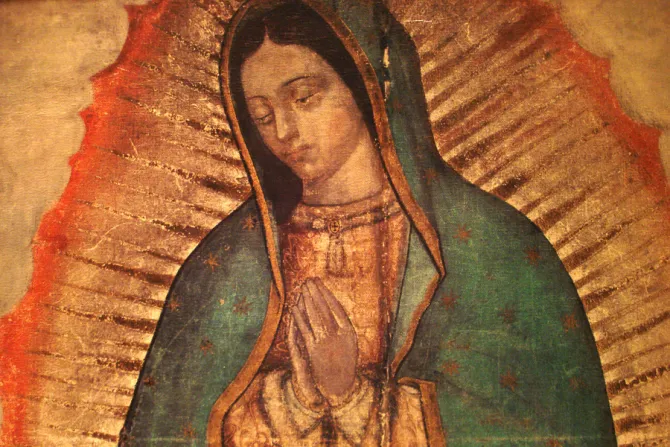"But they can also be these really big things, such as our loved ones, they fall away from the faith and we want them to return, or somebody from our friends or our family is very sick and we desperately implore God's help for them. It's something that everybody experiences."
O'Neills own fascination with miracles started in college, when for an archeology assignment he studied the miraculous tilma of Our Lady of Guadalupe, a Marian apparition to which he'd inherited his mother's devotion. He had heard stories about miracles associated with the image, both from within his own family and from the larger Church, and he wondered how much truth there was to the tales.
He also started learning about the larger tradition of miracles within the Church, and was struck by how the Church has carefully investigated thousands of claims over the years, only to select certain ones that it eventually deems as of divine origin.
"I thought that was fascinating that the Church would stick its neck out and say these things are worthy of belief," he said.
Although he continued his engineering studies throughout college, a piece of advice at graduation from Condoleezza Rice, who was serving as vice provost at Stanford University at the time, stayed with him.
"She asked what we were going to do after graduation, and her advice was to become an expert in something," he said.
"And I thought about what would be a great thing to study? My mind went back to all those hours I'd spent in the library and my promise to return to it someday and I said you know what? I want to be the expert on miracles."
For a while he kept his studies private - he didn't want to be seen as the guy who was obsessed with weird things like Bigfoot or the Loch Ness Monster. But eventually, he realized that many people were interested in miracles and found them helpful for their own faith.
"It's a way that people feel connected to God, they know that God is a loving father watching out for them, so it's one of those things - a miracle is a universal touchstone," he said.
"No matter how strong we think our faith is or want it to be, we always want to know that God is there for us, and miracles are that sort of element that bridges the gap between our faith and our connection with God."
In his book, O'Neill provides descriptions and examples of every basic category of miracle within the Catholic Church, including healing miracles from saints in the canonization process, biblical miracles, apparitions, locutions (audible messages from God or a saint), miraculous images, Eucharistic miracles, incorrupt bodies (those that either partially or fully do not decompose after death), and stigmata (the wounds of Christ appearing on some living people).
(Story continues below)
Subscribe to our daily newsletter
The most popular kind of miracle, and O'Neill's personal favorite, are Marian apparitions - when Mary appears in a supernatural and corporeal way to a member of the faithful, most often with a message.
There have been about 2,500 claims of Marian apparitions throughout history, and a major one that many people are currently curious about are the alleged apparitions happening at Medjugorje, about which the Church has yet to make a definitive decision of validity. Curiosity about Marian apparitions was also a large part of what spurred O'Neill to create his website, miraclehunter.com, where he files information about miracles in their respective categories and provides information on their origin story and whether or not they have been approved by the Vatican.
"The Vatican didn't have a resource where you can find out what's approved and what's not, and what messages are good for our faith and what ones we should stay away from, so I tried to create a resource for the faithful for that," he said. He's now been running the website for more than 15 years.
O'Neill also loves Eucharistic miracles, because unlike several other types of miracles, whose validity are largely determined by faithful and reliable witnesses, science can be applied.
"They can check to see if it's really human blood, and what type of blood, and in some cases you have heart muscle in these hosts that have turned into true flesh," he said.
One of O'Neill's favorite Eucharistic miracles occurred in Argentina while Pope Francis was still a bishop there.




